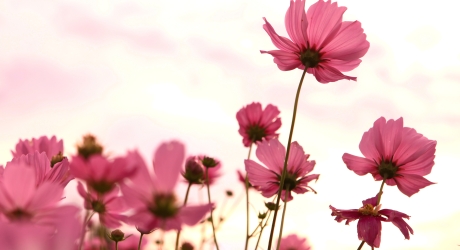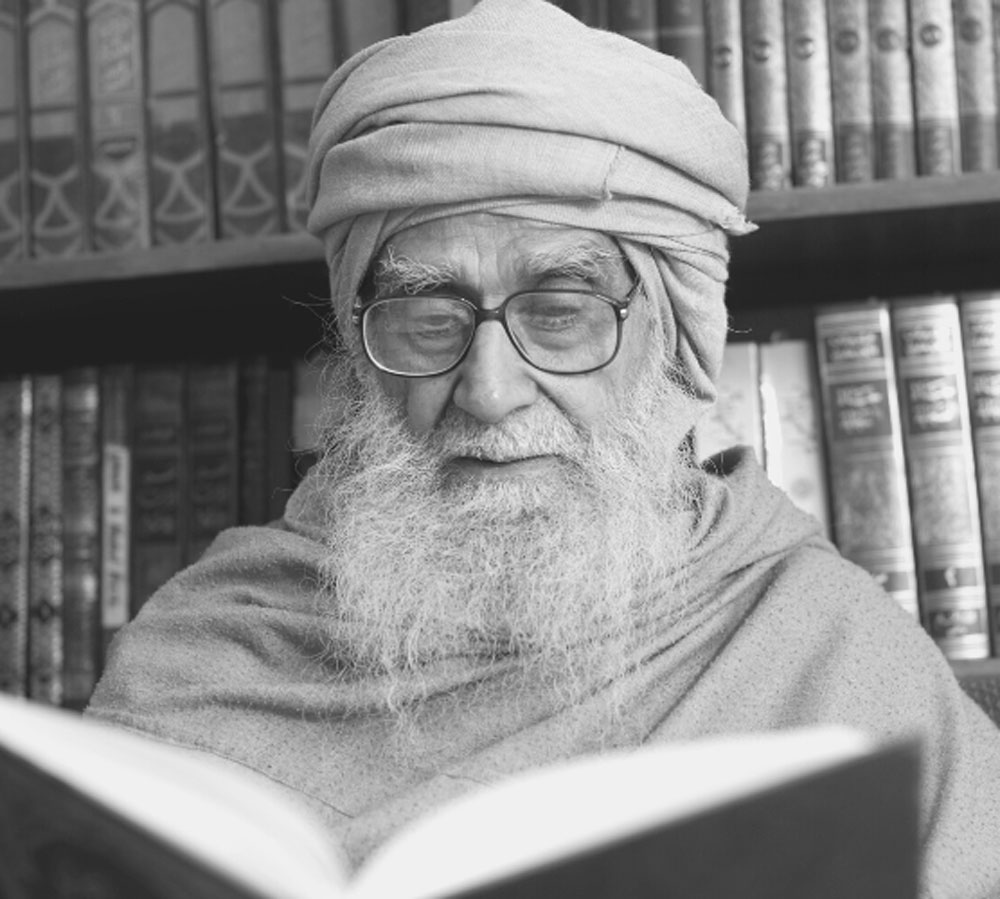This chapter is based on an authoritative Arabic book titled Hijab al-Mar’ah al-Muslimah fil Kitab was-Sunnah, by Muhammad Nasiruddin al-Albani, a famous scholar and traditionist. It was translated by this writer and initially published in condensed form in the quarterly, Islam and the Modern Age. (Islam and the Modern Age, Urdu Edition, New Delhi, January 1973)
The third edition of the original work with some additions is before me. The question of hijab (veil), or purdah in Urdu, the author tells us, has been discussed in light of the Quran and Hadith.
From the author’s point of view, a woman’s face is not included in the parts of the body that need to be compulsorily covered. He suggests, however, that it is better to cover it. He agrees with those who, in spite of holding the view that the face is not to be covered as a rule, nevertheless advocate the covering of the face in order to discourage mischief, in view of the general moral degradation in present-day society. Here is one of the traditions referred to by him to support his argument.
‘Aishah says that Muslim women used to attend the morning prayer led by the Prophet wrapped in a sheet of cloth. Afterwards, when they returned home, it was so dark that they could not be recognized.
This narrative makes it clear that their faces were not covered. Had their faces been covered, the question of their being recognized would not arise. The phrase “because of the darkness they could not be recognized” makes sense only if the face, by which individuals are recognized, were uncovered.
Muhammad Nasiruddin al-Albani takes a similar stand as regards the covering of a woman’s hands, quoting a famous tradition narrated by Ibn ‘Abbas. It says that once the Messenger of God addressed the women to urge them to give alms (sadaqah). Afterwards Bilal ibn Rabah, a Companion of the Prophet, spread a sheet, on which the women began throwing their rings.
After quoting this tradition the author quotes Ibn Hazm:
Ibn ‘Abbas saw the hands of women in the presence of the Prophet. This proves that the face as well as the hands are not included in the parts of the body to be covered. Indeed all other parts except these have to be veiled. (Muhammad Nasiruddin al-Albani, Hijab al-Mar’ah al-Muslimah fil Kitab was-Sunnah (1914), p. 31)
He further writes:
My heart bleeds to see the way many women of today adorn themselves, crossing all limits of decency. But the remedy does not lie in declaring forbidden what Allah has permitted.
He goes on to say that it is clear from the Quran, the Hadith and the practice of the Companions and tabi’un (companions of the Prophet’s Companions) that, whenever a woman steps out of her home, it is incumbent upon her to cover herself completely so as not to show any part of her body except the face and the hands. (Ibid, p. 7) According to Muhammad Nasiruddin al-Albani’s findings the following rules of hijab are applicable:
- The whole body, except for the exempted parts should be covered.
- But any veil which in itself becomes an attraction is to be avoided.
- Garments should not be semi-transparent.
- Dress should not be tight fitting.
- Garments should not be perfumed.
- The form of dress should not in any way resemble that of men.
- It should not resemble that of non-believers.
- Garments should not reflect worldly honor. (Ibid, p. 13)
The first rule of hijab has been derived from the following passages of the Quran:
Say to the believing women to turn their eyes away (from temptation) and to preserve their chastity; to cover their adornments except such as are normally displayed; to draw their veils over their bosoms and not to reveal their finery except to their husbands, their fathers, their husbands’ fathers, their sons, their step-sons, their brothers, their brothers’ sons, their sisters’ sons, their women-servants, their slave girls, male attendants lacking in natural vigor, and children who have no knowledge of sex. And let them not stamp their feet when walking so as to reveal their hidden trinkets. Believers, turn to Allah together in repentance, that you may prosper. (The Quran, 24:31)
The second verse in this connection is as follows:
Prophet, enjoin your wives, your daughters and the wives of true believers to draw their veils close round them. That is more proper, so that they may be recognized (as virtuous women) and not molested. Allah is Forgiving and Merciful. (The Quran, 33:59)
The author interprets the wording of 33:59, “to cover their adornments except such as are normally displayed,” to mean that the hands and face are exempt from covering. He draws his argument in support of this from the Hadith.
After studying many ahadith in connection with the verse from Surah 33 of the Quran, he writes: “It is clear from the instances drawn from the Quran and the Hadith that, although it accords with the shari’ah and it is preferable for a woman to cover her face, it is not compulsory for her to do so. It would be better if women followed this practice, but there is no harm if they do not.” (Muhammad Nasiruddin al-Albani, op. cit., p. 31)
The second rule of hijab, according to Muhammad Nasiruddin al-Albani’s research, is that hijab in itself should not be a source of attraction. It should not become a display of finery referred to in the Quran as tabarruj:
Stay in your homes and do not display your finery as women used to do in the days of Jahiliyah (period before Islam). Attend to your prayers, give alms to the poor, and obey God and His Messenger. God only wishes to remove uncleanliness from you (members of the family), and to purify you. (The Quran, 33:33)
According to the author, the intention of this verse is that a woman should not display her beauty and attraction in such a way as to produce carnal desires in the hearts of men. Since the purpose of the gown (jilbab) is to hide such attractions, it is, therefore, unimaginable that the gown itself should become a source of attraction. (Muhammad Nasiruddin al-Albani, op. cit., p. 31)
He states, morever, that in Islam the displaying of feminine attractions is a habit so important to avoid that it has been bracketed in the scriptures along with such unlawful things as polytheism, adultery and theft. He has collected a number of ahadith to support his argument.
The third rule of the hijab, according to the writer, is that the garment should not be thin because a thin cloth can never provide cover. And a diaphanous garment only accentuates the attraction of a woman and becomes a potential source of mischief. (Ibid, p. 56) The author quotes many sayings of Prophet Muhammad, one of which is as follows:
Towards the end (in the last phase) there will be women among my followers who will appear naked, or as good as naked, even when wearing clothes.
The fourth condition set by the writer is that the garment should be loose-fitting. He again supports his argument by quoting various sayings of the Prophet. Finally, he has given an instance where Fatimah (the Prophet’s daughter) expressed her disapproval of a dead woman being wrapped in such a shroud as might display her body as being a woman’s. He writes: “See for yourself how the dearest daughter of the Prophet considered the use of such a cloth detestable as would not properly drape feminine parts of a dead woman’s body. Certainly such a garment for a living woman would be far worse.” (Ibid, p. 63)
The fifth condition of hijab is that the garment should not be perfumed (while going out). There are many traditions forbidding women to wear perfume while going out. After quoting four traditions, he writes: “Ibn Daqiq al-’Id writes that in this hadith a woman is forbidden to go to the mosque wearing perfume, because it stimulates carnal desires in men. So when it is forbidden for women wearing perfume to go to the mosque, their use of perfume when they go out shopping, or for any other purpose, is all the more sinful. Al-Haythami writes that going out wearing adornments and perfume is a major sin, even if it is done with the husband’s permission. “ (Ibid, p. 65)
The sixth condition of hijab is that a woman’s garments should not resemble those of men. Here is one of the traditions he has quoted to this effect:
The Prophet has condemned men who imitate women and women who imitate men. (Ibid, p. 67)
From this tradition the writer comes to the conclusion that a garment which in most parts resembles those of men is not permissible for women, even if it covers her adequately. (Ibid, p. 77)
The seventh rule of hijab is that it should not resemble that worn by non-believers. Muhammad Nasiruddin al-Albani says that any similarity to non-believers must be avoided, in matters of worship, festivals and dress. (Ibid, p. 78) The Quran states this briefly, but the sunnah provides the detail. One of the verses of the Quran on which he· bases this argument states that it is “so that they may not be like those who were given the scriptures before this…” (The Quran, 57:16) He quotes Ibn Taymiyya and Ibn Kathir who construe this verse as meaning that imitation of non-believers is not allowed in Islam.
Then he quotes the tradition in which the Prophet forbade adopting the ways of non-believers in prayers, funeral prayers, sacrifice, food, dress, etiquette, etc. (Muhammad Nasiruddin al-Albani, p. 80)
The eighth rule of hijab is that a woman’s garments should not reflect worldly honor. Here is a hadith to this effect:
One who wears the mantle of fame in this world will be made to wear the robe of dishonor in the hereafter. (Ibid, p. 80)
His concluding remarks are: “The garment should cover the entire body of a woman except the face and hands, and should not become an attraction in itself. Neither should it be thin, nor tight. It should not accentuate the body. It should not be perfumed or resemble those worn by men or non-believing women. It should not suggest fame.” (Ibid, p. 110)







